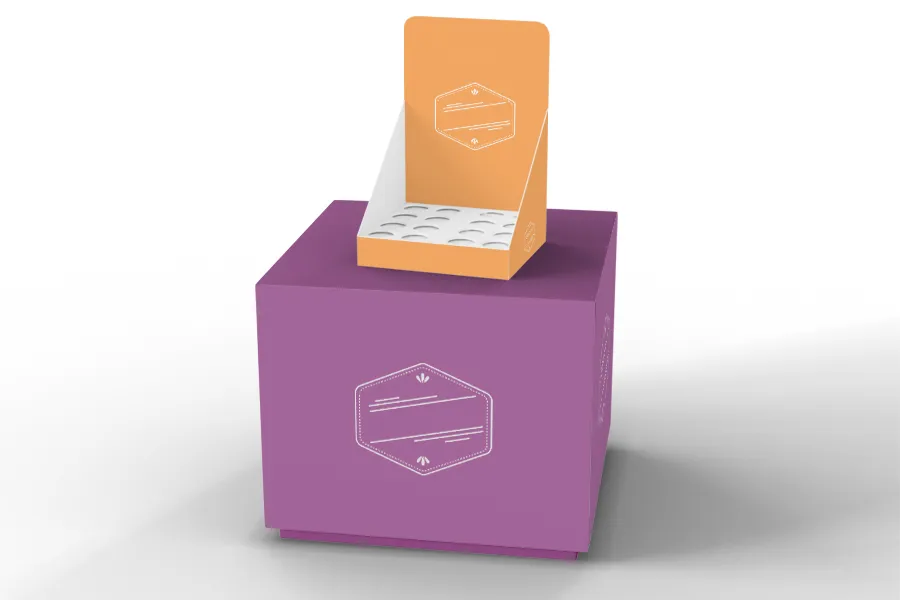A small at the display production of corrugated board manufacturers
Floor displays, counter displays or contour-cut standees, as often seen in supermarkets, retail chains and also other premises, impress with their sophisticated graphics and skillful showcasing. As an important medium of sales promotion, there is no getting around them. They are flexible and can be used everywhere and for a multitude of products. For the paper and packaging companies that manufacture this type of packaging, they place special demands on planning, production, and processing.
Small or large print runs: What to consider?
The quantity determines not only the price, but a specific method of production. Displays often stand out because of the sophisticated graphics used to present the end products. This means that a paper and packaging company must pay special attention to the design and the choice of printing options. A variety of printing types can be chosen – direct print/flexo, offset, lamination or digital. The specific choice depends on the project specifications. Generally, lower quantities suggest using a digital press to satisfy customer needs. Using digital print techniques furthermore requires boards with a white liner to ensure clean digital print finish.
New requirements already emerge through planning & design
Front-office software integration is a critical element in the paper and packaging industry. Artios CAD and Fusion are commonly used web service platforms in companies where project managers, designers, graphic designers, and estimators collaborate and provide corresponding project deliverables such as CAD drawings, 3D renderings, artworks, etc. Since these front-end tools are typically not integrated with an ERP system (e.g., SAP), inefficiencies are inevitable and manual data maintenance in both systems increases the likelihood of human error.
How can Aicomp optimize your system landscape?
For the industry-relevant optimization of the SAP ERP system, Aicomp relies on the support of its own add-on VCPowerPack – a configuration engine that optimizes the configuration of variant-rich products in SAP and automates data transfer and processes.
In order to map the different product specifications (direct printing versus lamination versus digital printing) with the final customer product (which should always look the same to the market) in the system, we use a concept of multiple product configuration versions and the use of production versions, which are configurations specifically tailored to each type of printing. A semi-automated process ensures an efficient master data creation of multiple VC materials with different versions and a sophisticated printing determination logic ensures that each time the correct printing technique is used without jeopardizing any deviation of customer facing deliverables.
For the integration of a CAD system with SAP, Aicomp has flexible solutions for seamless integration of web-based front-end software with SAP. SAP standard integration techniques (APIs and/or web services) are used to enable bidirectional data transfer between the CAD software and SAP. It is possible to model mappings between CAD data (field attributes) to SAP Business Objects (SAP fields/VC parameters).
What are the benefits of our CAD and digital printing integrations?
With the help of the integration solutions, Aicomp offers an optimized mapping of all relevant data and a more efficient process landscape in SAP, which are necessary to produce displays. The most significant improvements include:
- The appropriate specification determination for the store floor without manual user intervention.
- The increased customer satisfaction and ROI from selecting the right print option that leads to the most efficient and cost-effective production route.
- The distribution of information across systems to support daily business operations.
- Streamlining the entire business process on the frontend, even before data is created in an ERP system.
- The time saved by eliminating duplicate data entry.
- The elimination of data inconsistencies and errors, as there is only one point of entry.
- The acceleration of the entire quote-to-cash process, as cost estimates for complex projects are available in a timely manner, giving the company a competitive advantage.



